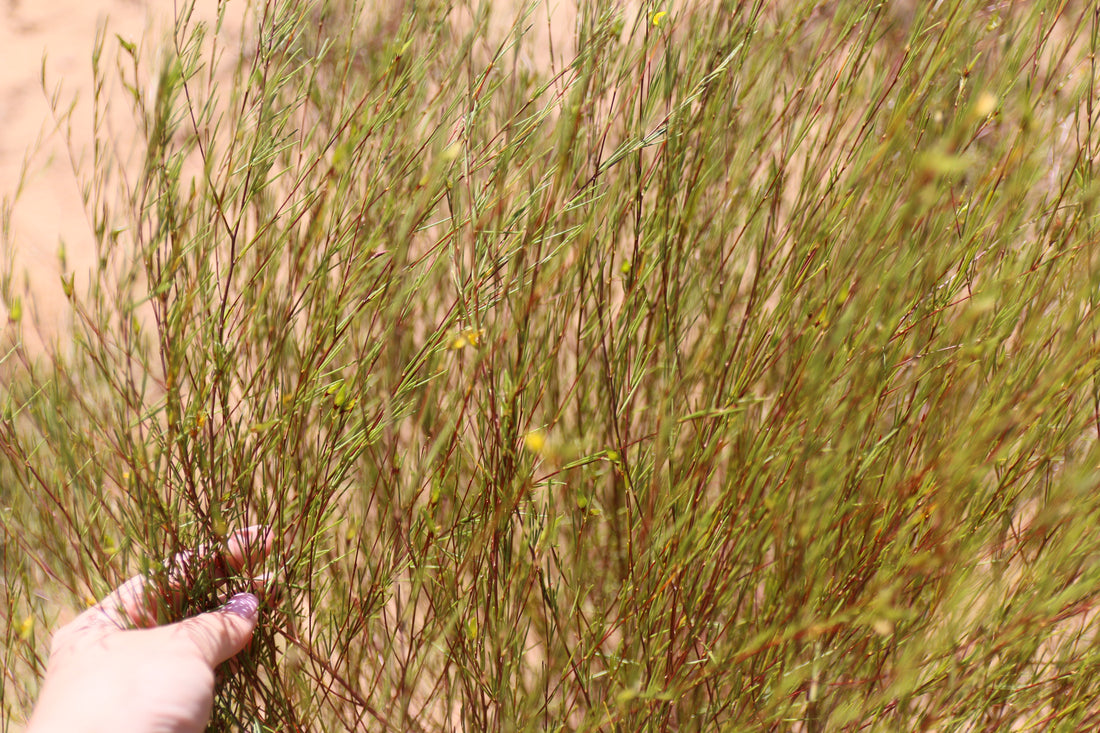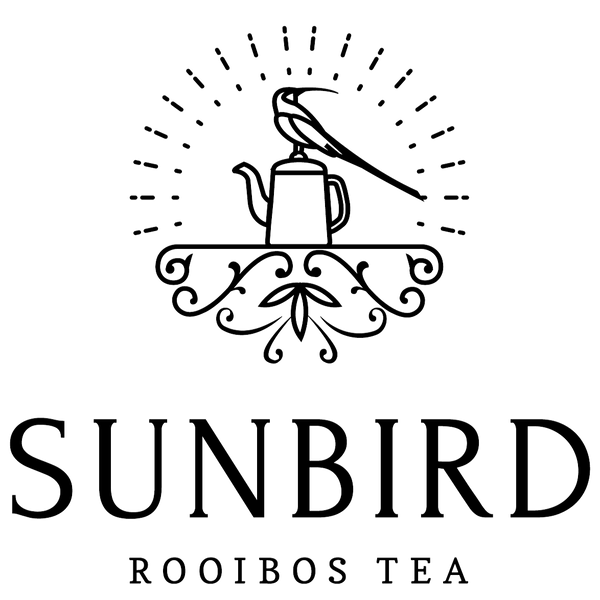
All About Wild Rooibos
Share
South Africa’s beautiful landscape holds many secrets waiting to be discovered. Yet, some of the secrets were known but have been lost to time. With sadness, our unfortunate history of dispossession means that there many competing truths about past events.

Amongst this is the story of Rooibos, how it was used, and how it came to be used as a ‘tea’.
Sunbird does not have the answers but we are proud to pay the indigenous knowledge levy to the Khoisan Council that contributes to retention of this cultural heritage. We are also extremely privileged to have access to not only the best farmed Rooibos, but also to Wild Rooibos that still can be found growing in its natural environment.
But how does it differ to the farmed Rooibos, and what makes it so special?
Wild Rooibos:
Perhaps the only rival to wealth of marine treasure of the cold Cape coast, is the botanical bounty in Fynbos Floral Kingdom of the mountains that rise from the sea. Early humans (perhaps even pre-Humans) were able to use these resources to their advantage, so much so that the cultural beginnings in this corner of Africa allowed all our ancestors to travel beyond this continent to the rest of the world. Rooibos is one such species, and the health benefits that are enjoyed in all corners of the globe today were known to ancient people.
Europeans settled in the Cape, partly because of the tea trade from China and as tea’s popularity grew, both settlers and locals would have sought to emulated this trend. Rooibos, with its bright rich red colour, delicious flavour and relative availability was an obvious candidate.
In those days, it was also known for its other traits such as ‘Berg tee’ – mountain tea, from where it was grown, ‘Donkie tee’ – after the pack animals which brought it from these remote places, ‘Byl tee’ – axe tea, the primary tool used to process it to ‘stokkies tee’ – the needle-like leaves and stick that are then brewed.
By the 1920’s, the demand meant that wild stocks were diminishing but also that commercial farming was also now a viable option. After selective breeding – and not without indigenous knowledge input – domestic Rooibos was ready to be planted in neat rows in tilled fields.
Yet, its wild cousins still lived free on slopes where it is too steep or rocky to be commercially farmed. The different sub-species of wild Rooibos add to the complexity of the flavours with a fresh fruit and mildly tannic taste. The flavor profile of wild Rooibos is as wild as its surroundings. Each sip is a journey through the untamed wilderness, a testament to the purity of nature's bounty.
Cultivated Rooibos:
Farmed Rooibos starts from seeds are harvested from the fields themselves. These seeds are germinated in nurseries before being transferred to the fields in winter time to establish themselves with the winter rains.
The domesticated Nortier variety was intended for easier farming and processing. The plant has a more uniform height – only getting to about waist high in a good year instead of towering above like it’s untamed cousin. It also much more bushy with denser leaves and so has more leaves relative to twigs. While this approach allows for consistency in flavour and quality, it lacks the raw, unbridled essence found in wild Rooibos.
Unlike ‘real’ tea which is only leaves, Rooibos is a mixture of sticks and leaves and the leaves are what gives its recognisable flavours, but the sticks create the body or mouthfeel – giving a more woody or earthy taste.
The flavour profile of farmed rooibos tends to be bolder and sweeter compared to its wild counterpart – as the busy nature of the plant gives it higher leaf to stick ratio. It retains the characteristic warmth and richness of Rooibos but lacks the depth and complexity that wild Rooibos embodies.
What to choose:
So, which one is better? The answer lies in personal preference and the experience one seeks. Wild Rooibos offer a taste of adventure, a connection to the rugged landscapes from which it originates. Cultivated Rooibos, on the other hand, provides a reliable and consistent flavor profile for those who prefer a gentler brew.
Ultimately, whether you're drawn to the raw beauty of the wild or prefer the comfort of cultivated crops, Rooibos offers a world of flavour to explore. Sunbird’s customers benefit from the choice and variety on offer in our Single Origin range. We like to believe that drinking tea allows one to travel without moving to the source – and in the case of Wild Rooibos these are the high slopes of the Cederberg where sunbirds fly and sing like they have for millennia past. So, a sip of wild Rooibos, is not just a journey to these remote peaks, but also a window in the past and a near forgotten era.
